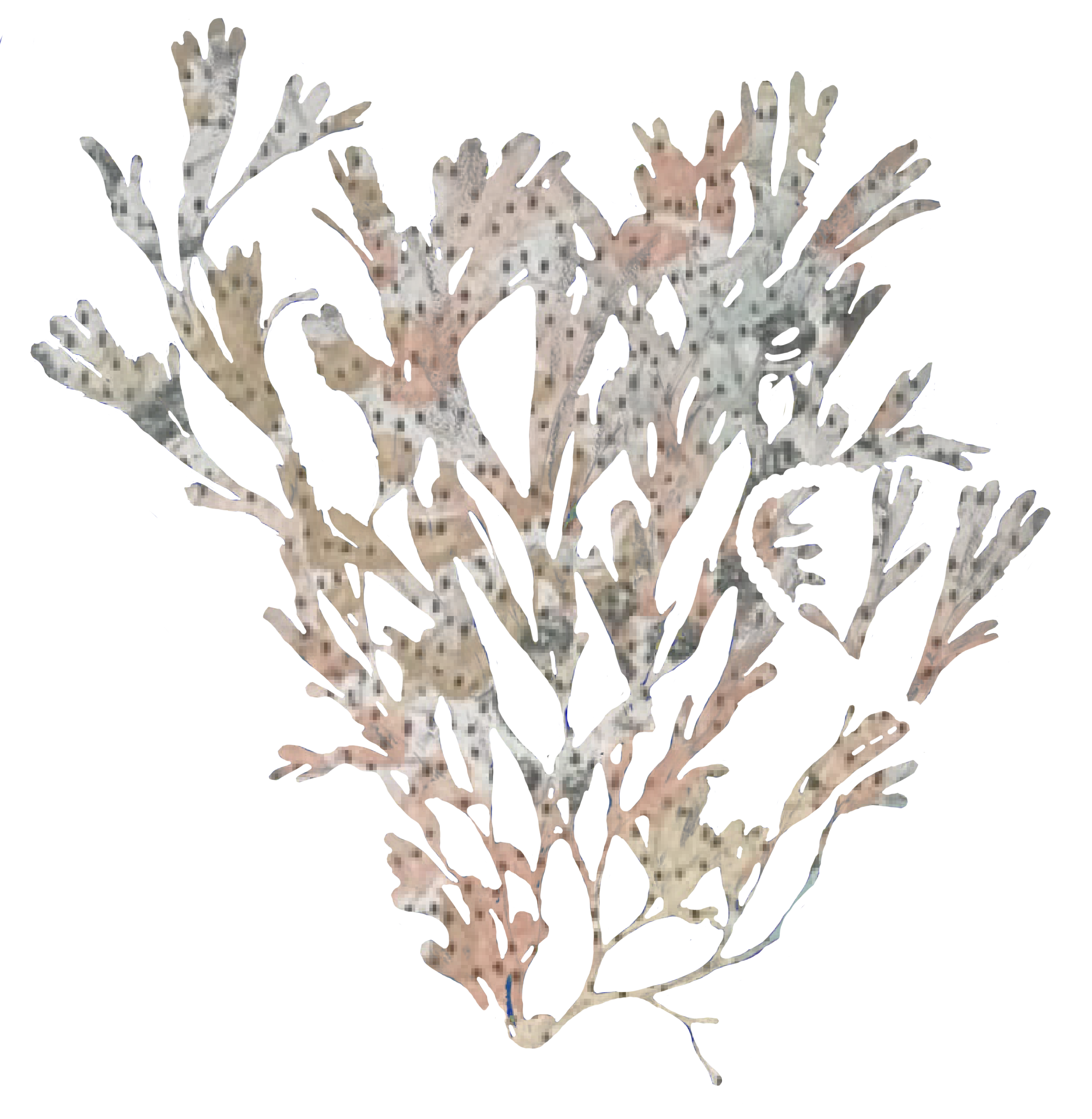Marine
Algae

The 3 Types of Seaweed
- Brown Algae (Phaeophyta)
- Green Algae (Chlorophyta)
- Red Algae (Rhodophyta)
The term "algae" covers many different organisms capable of producing oxygen through photosynthesis (the process of harvesting light energy from the sun to generate carbohydrates). These organisms are not necessarily closely related. However, certain features unite them, while distinguishing them from the other major group of photosynthetic organisms: the land plants.
Probably the most important contribution of algae to our environment and well-being is the generation of oxygen through photosynthesis. "Algae are indispensable because they produce about half the oxygen in Earth's atmosphere," Graham told LiveScience.
According to a 2010 review article published in the journal Biofuels, petroleum is partially derived from ancient algae deposits. "Some very old oil deposits are attributed to cyanobacteria, though the identity of the producers is still uncertain," Graham said. "Younger oil deposits probably arose from eukaryotic marine green algae, coccolithophorids, and other microscopic marine phytoplankton." These oil deposits are a limited resource and are slowly dwindling with human use. As a result, researchers are looking into renewable alternatives.
Algal biofuels are a promising replacement for fossil fuels. All algae have the ability to produce energy-rich oils and several microalgal species naturally accumulate high levels of oil in their dry mass. Moreover, algae are found in diverse habitats and can reproduce quickly. They also efficiently use carbon dioxide. "Algae help to keep atmospheric carbon dioxide levels stable by storing [the gas] in organic materials that include oil deposits and inorganic carbonate rocks," Graham said. Green algae, diatoms and cyanobacteria are just some of the microalgal species that are considered good candidates for the production of biofuel (Biofuels, 2010).
Marine macroalgae, or seaweeds, are plant-like organisms that generally live attached to rock or other hard substrata in coastal areas. They belong to three different groups, empirically distinguished since the mid-nineteenth century on the basis of thallus color: brown algae (phylum Ochrophyta, class Phaeophyceae; see right for a large brown kelp, Durvillaea in New Zealand), red algae (phylum Rhodophyta; below Gelidium in Ireland), and green algae (phylum Chlorophyta, classes Bryopsidophyceae, Chlorophyceae,
Dasycladophyceae, Prasinophyceae, and Ulvophyceae; bottom, Ulva howensis in Lord Howe Island, off eastern Australia). Distinguishing these three phyla, however, involves more substantial differences than colour. In addition to the pigmentation, they differ considerably in many ultrastructural and biochemical features including photosynthetic pigments, storage compounds, composition of cell walls, presence/absence of flagella, ultrastructure of mitosis, connections between adjacent cells, and the fine structure of the chloroplasts. They originated through different evolutionary processes (primary endosymbiosis for green and red algae, secondary endosymbiosis for brown algae, and for this reason they are now classified in different kingdoms (green algae and red algae in the Kingdom Plantae, and brown algae in the Kingdom Chromista).
References
Aparna Vidyasagar. What Are Algae? (livescience, 2016)
GREEN ALGAE
Probably the most important contribution of algae to our environment and well-being is the generation of oxygen through photosynthesis. "Algae are indispensable because they produce about half the oxygen in Earth's atmosphere," Graham told LiveScience.
According to a 2010 review article published in the journal Biofuels, petroleum is partially derived from ancient algae deposits. "Some very old oil deposits are attributed to cyanobacteria, though the identity of the producers is still uncertain," Graham said. "Younger oil deposits probably arose from eukaryotic marine green algae, coccolithophorids, and other microscopic marine phytoplankton." These oil deposits are a limited resource and are slowly dwindling with human use. As a result, researchers are looking into renewable alternatives.
Algal biofuels are a promising replacement for fossil fuels. All algae have the ability to produce energy-rich oils and several microalgal species naturally accumulate high levels of oil in their dry mass. Moreover, algae are found in diverse habitats and can reproduce quickly. They also efficiently use carbon dioxide. "Algae help to keep atmospheric carbon dioxide levels stable by storing [the gas] in organic materials that include oil deposits and inorganic carbonate rocks," Graham said. Green algae, diatoms and cyanobacteria are just some of the microalgal species that are considered good candidates for the production of biofuel (Biofuels, 2010).
Marine macroalgae, or seaweeds, are plant-like organisms that generally live attached to rock or other hard substrata in coastal areas. They belong to three different groups, empirically distinguished since the mid-nineteenth century on the basis of thallus color: brown algae (phylum Ochrophyta, class Phaeophyceae; see right for a large brown kelp, Durvillaea in New Zealand), red algae (phylum Rhodophyta; below Gelidium in Ireland), and green algae (phylum Chlorophyta, classes Bryopsidophyceae, Chlorophyceae,
Dasycladophyceae, Prasinophyceae, and Ulvophyceae; bottom, Ulva howensis in Lord Howe Island, off eastern Australia). Distinguishing these three phyla, however, involves more substantial differences than colour. In addition to the pigmentation, they differ considerably in many ultrastructural and biochemical features including photosynthetic pigments, storage compounds, composition of cell walls, presence/absence of flagella, ultrastructure of mitosis, connections between adjacent cells, and the fine structure of the chloroplasts. They originated through different evolutionary processes (primary endosymbiosis for green and red algae, secondary endosymbiosis for brown algae, and for this reason they are now classified in different kingdoms (green algae and red algae in the Kingdom Plantae, and brown algae in the Kingdom Chromista).
References
Aparna Vidyasagar. What Are Algae? (livescience, 2016)
